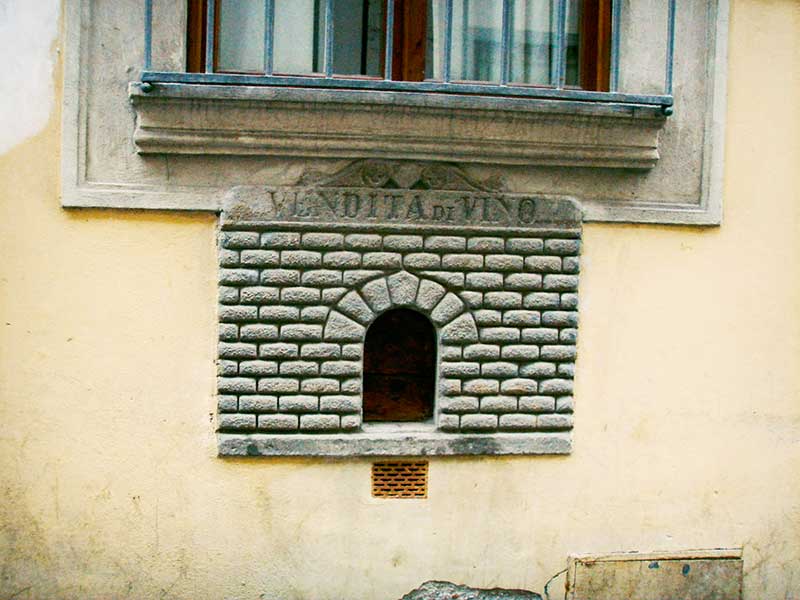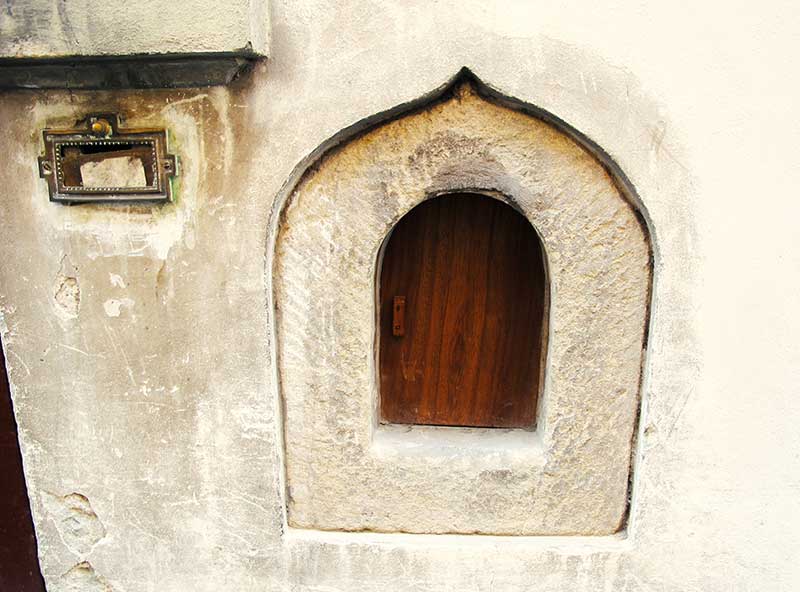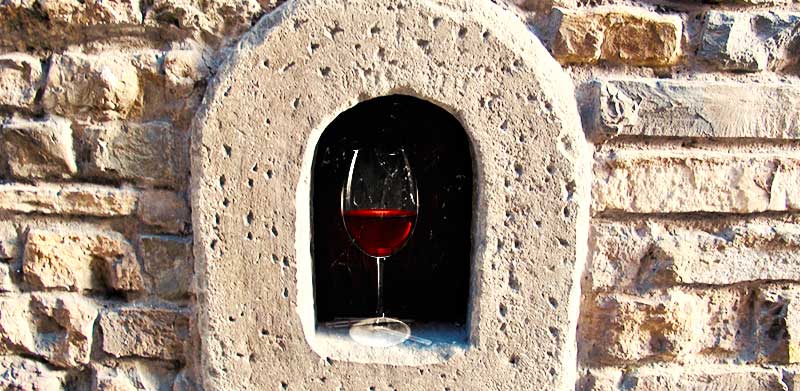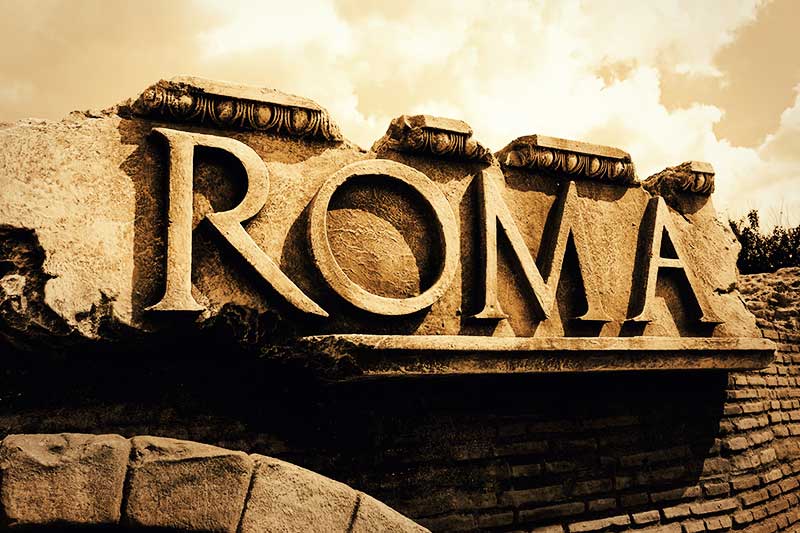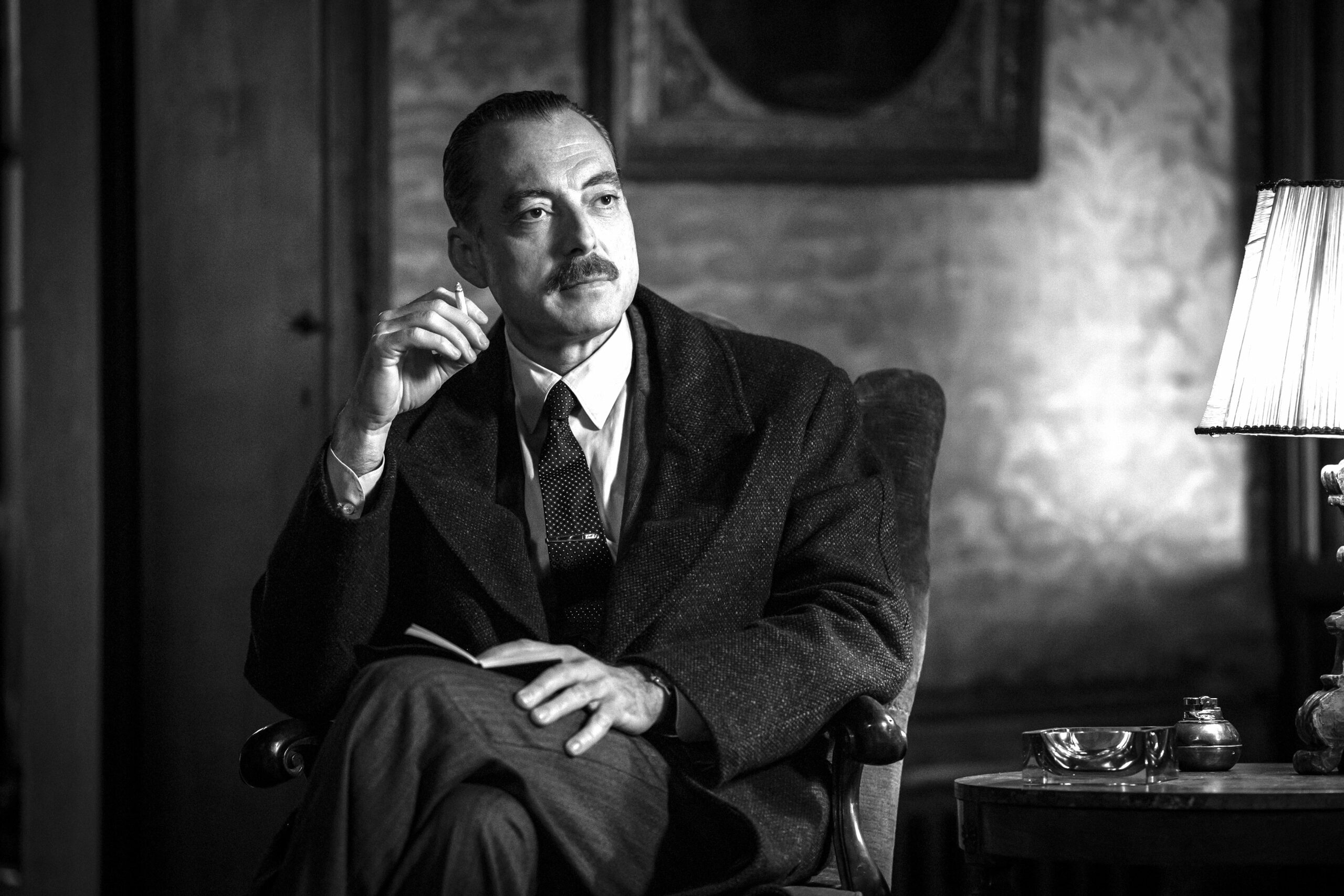Florence’s streets are filled with secrets and curiosities: some of them are known to those into history and local legends, others are so obscure only locals can tell you about them. This is not so unusual, when you think of it, all old cities are filled with history and, with it, always comes a deluge of old tales and interesting traditions.
The city of Dante Alighieri has recently revived one of them, that of the buchette del vino, or wine windows. If you read us regularly, you may remember an interesting article about them on our very own pages, back in 2017. At the time, buchette were just a curious memento of Renaissance Florence, a nice reminder of what life used to be all those centuries ago, in a time when Tuscany was the cultural heart of the whole world. Today, these ubiquitous “holes in the wall” are operative again.

A buchetta del vino in Florence: there are more than 100 in the city (Ⓒ: Dreamstime)
Very good, you may say, but what are they exactly? Here’s a little history, for those who’ve never heard of read about them before. The buchette del vino are peculiar openings, usually around one foot tall, that Renaissance Florentine nobility built into the façades of their palaces. Most of them were boarded up after they fell into disuse, but about 100 are still there, ready to be spotted by an attentive eye. Local historians tell us they first became popular sometimes in the 16th century, when the aristocrats of Florence began investing in wine making and selling. Always eager to make some more bucks, they excogitated an ingenious system to avoid paying taxes: selling the wine directly from their own residences, through what may resemble an ante litteram “drive through” for liquors.
Buchette connected the street to buildings’ cellars, where a cantiniere, a server who had the specific duty to attend the buchetta, was ready to fill orders. If you wanted a bottle of wine, all you needed to do was knock on the buchetta’s window, leave money and an empty bottle in it, and wait for it to be returned to you full. Simple, quick and, most importantly, tax free for wine makers.
Buchette became very fashionable, to the point all wine making aristocrats would have one on the street facing wall of their palatial homes. They were so famous their use spread around Tuscany, especially in places like Pisa and Siena.

A buchetta del vino from which wine was sold directly from the wine cellars of the lords (Ⓒ: Dreamstime)
Our curious wine delivering windows served the people of Florence for about three centuries, until the rise in popularity of more convivial ways to drink, taverne and osterie, marked their fall into oblivion. That, until 2015 when the Associazione Culturale Buchette del Vino was created to recover and protect this unique feature of Florentine heritage. A while back Matteo Faglia, one of the Associazione’s founders told to Wine Spectator, a popular online magazine about wine and wine making, that “these small architectural features are a very special commercial and social phenomenon unique to Florence and Tuscany,” as we mentioned already above. More importantly, though, Faglia also says that in spite of being “a minor cultural patrimony, they are an integral part of the richest area of the world in terms of works of art and monuments: Tuscany.” This is why the Associazione took upon itself the duty to find, catalogue and preserve all the buchette still existing around the region.
The Summer just about to end has brought a welcome present to the people of the Associazione Culturale delle Buchette del Vino, because Babae, a restaurant in the heart of Florence’s historical centre, decided to make its own buchetta operative again. Throughout the hot season, the people at Babae — its name is a bit of a cultural gem, too: it is the Latin equivalent of our modern “wow!” — served glasses of refreshing red or white to customers through their own buchetta. And it was a success.
In an interview to local Florence magazine Lungarno, Brando Gozzini, of the restaurant’s owners, explains how they decided to reopen the buchetta: “when we got the restaurant, we immediately noticed there was a buchetta. We wanted to do something with it and we thought to open it for aperitivo, between 19 and 20.”
Babae’s initiative has certainly brought a lot of attention on the Associazione Culturale delle Buchette del Vino, as Faglia highlights: “although the ways of selling wine have obviously changed since the wine windows were fully active,” he explains to Wine Spectator, “this small gesture, which highlights a nice of Florentine history, is very welcome, because it helps to keep alive this antique and unique way of selling one of Tuscany’s most important agricultural and commercial products: its wine.”

A buchetta del vino from which wine was sold directly from the wine cellars of the lords (Ⓒ: Dreamstime)
The opening of an ancient buchetta may seem an almost negligible gesture, when considered in the wider panorama of what needs to be done, in Florence as anywhere else in Italy, to keep alive and to preserve ancient traditions part of the country’s rich and important heritage. But in truth, it is indication of something important. It shows the interest towards the past and its history, towards its meaning and towards the centrality of its preservation is clear also to younger generations, those represented by the imaginative, resourceful owners of Babae. It is also demonstration that the work of us common men and women with a penchant for local history and heritage protection, just like the people at the Associazione Culturale dell Buchette del Vino, can bring the right attention to something that would otherwise be forgotten and neglected.
Le strade di Firenze sono piene di segreti e curiosità: alcune sono note a chi conosce storia e leggende locali, altre sono così oscure che solo la gente del posto può raccontarle. Questo non è così insolito, se ci si pensa. Tutte le città antiche sono piene di storia e, con essa, arriva sempre un diluvio di vecchie storie e tradizioni interessanti.
La città di Dante Alighieri ne ha recentemente riportata in vita una, quella delle Buchette del vino. Se ci leggete regolarmente, forse ricorderete un interessante articolo su di esse sulle nostre pagine, nel 2017. Allora le Buchette erano solo un curioso ricordo della Firenze rinascimentale, un bel ricordo di come era la vita di una volta, in un’epoca in cui la Toscana era il cuore culturale del mondo intero. Oggi, questi onnipresenti “buchi nel muro” sono di nuovo operativi.
Molto bene, si può dire, ma cosa sono esattamente? Ecco un po’ di storia, per chi non ne ha mai sentito parlare prima d’ora. Le Buchette del vino sono particolari aperture, solitamente alte circa un piede, che la nobiltà rinascimentale fiorentina ha costruito sulle facciate dei propri palazzi. La maggior parte di esse sono state murate dopo che sono cadute in disuso, ma circa 100 sono ancora lì, pronte per essere individuate da un occhio attento. Gli storici locali ci dicono che sono diventate popolari attorno al XVI secolo, quando gli aristocratici fiorentini iniziarono a investire nella produzione e nella vendita del vino. Sempre desiderosi di guadagnare qualche soldo in più, escogitarono un sistema ingegnoso per evitare di pagare le tasse: vendere il vino direttamente dalle loro residenze, attraverso quello che può sembrare un “drive through” ante litteram per gli alcolici.
Le Buchette collegavano la strada alle cantine degli edifici, dove un cantiniere, un servo che aveva il compito specifico di occuparsi della Buchetta, era pronto a evadere gli ordini. Se volevate una bottiglia di vino, tutto quello che dovevate fare era bussare alla finestra della Buchetta, lasciare soldi e una bottiglia vuota e aspettare che vi venisse restituita piena. Semplice, veloce e, soprattutto, esente da tasse per i produttori di vino.
Le Buchette divennero molto di moda, al punto che tutti gli aristocratici produttori di vino ne avrebbero avuto una sulla strada di fronte al muro delle loro case signorili. Erano così famose che il loro uso si diffuse in tutta la Toscana, soprattutto in luoghi come Pisa e Siena.
Le nostre curiose finestre per la consegna del vino servirono i fiorentini per circa tre secoli, fino a quando l’aumento della popolarità dei modi più conviviali di bere, come taverne e osterie, segnò la loro caduta nell’oblio. Questo, fino al 2015 quando è stata creata l’Associazione Culturale Buchette del Vino per recuperare e tutelare questa caratteristica unica del patrimonio fiorentino. Tempo fa Matteo Faglia, uno dei fondatori dell’Associazione, ha raccontato a Wine Spectator, popolare rivista online su vino e vinificazione, che “questi piccoli elementi architettonici sono un fenomeno commerciale e sociale molto particolare, unico a Firenze e in Toscana”, come abbiamo già detto in precedenza. Ma, cosa ancora più importante, Faglia ha detto anche che, pur essendo “un patrimonio culturale minore, sono parte integrante dell’area più ricca del mondo in termini di opere d’arte e monumenti: la Toscana”. Per questo l’Associazione si è assunta il compito di rintracciare, catalogare e conservare tutte le Buchette ancora esistenti sul territorio regionale.
L’estate che sta per concludersi ha portato un regalo di benvenuto ai membri dell’Associazione Culturale delle Buchette del Vino, perché Babae, ristorante nel cuore del centro storico di Firenze, ha deciso di rendere nuovamente operativa la propria Buchetta. Durante tutta la stagione calda, il personale di Babae – anche il nome è un piccolo gioiello culturale: è l’equivalente latino del nostro moderno “wow!” – ha servito ai clienti bicchieri di rosso o bianco rinfrescante attraverso la propria Buchetta. Ed è stato un successo.
In un’intervista alla rivista fiorentina Lungarno, Brando Gozzini, della proprietà del ristorante, ha spiegato come hanno deciso di riaprire la Buchetta: “Quando abbiamo avuto il ristorante, abbiamo subito notato che c’era una Buchetta. Volevamo farci qualcosa e abbiamo pensato di aprirla per l’aperitivo, tra le 19 e le 20”.
L’iniziativa di Babae ha sicuramente portato molta attenzione sull’Associazione Culturale delle Buchette del Vino, come sottolinea Faglia: “Anche se le modalità di vendita del vino sono ovviamente cambiate da quando le finestre del vino erano completamente attive”, spiega a Wine Spectator, “questo piccolo gesto, che mette in risalto una bella storia fiorentina, è molto gradito, perché aiuta a mantenere vivo questo antico e unico modo di vendere uno dei prodotti agricoli e commerciali più importanti della Toscana: il suo vino”.
L’apertura di un’antica Buchetta può sembrare un gesto trascurabile, considerato nel più ampio panorama di quanto occorre fare, a Firenze come in qualsiasi altra parte d’Italia, per mantenere vive e preservare le antiche tradizioni, parte del ricco e importante patrimonio del paese. Ma in realtà, è indice di qualcosa di importante. Mostra quanto l’interesse verso il passato e la storia, verso il significato e la centralità della sua conservazione sia evidente anche tra le giovani generazioni, quelle rappresentate dai fantasiosi e intraprendenti proprietari di Babae. E’ anche la dimostrazione che il lavoro di noi uomini e donne comuni con un debole per la storia locale e la tutela del patrimonio locale, così come quello della gente dell’Associazione Culturale delle Buchette del Vino, può portare la giusta attenzione a qualcosa che altrimenti verrebbe dimenticato e trascurato.
